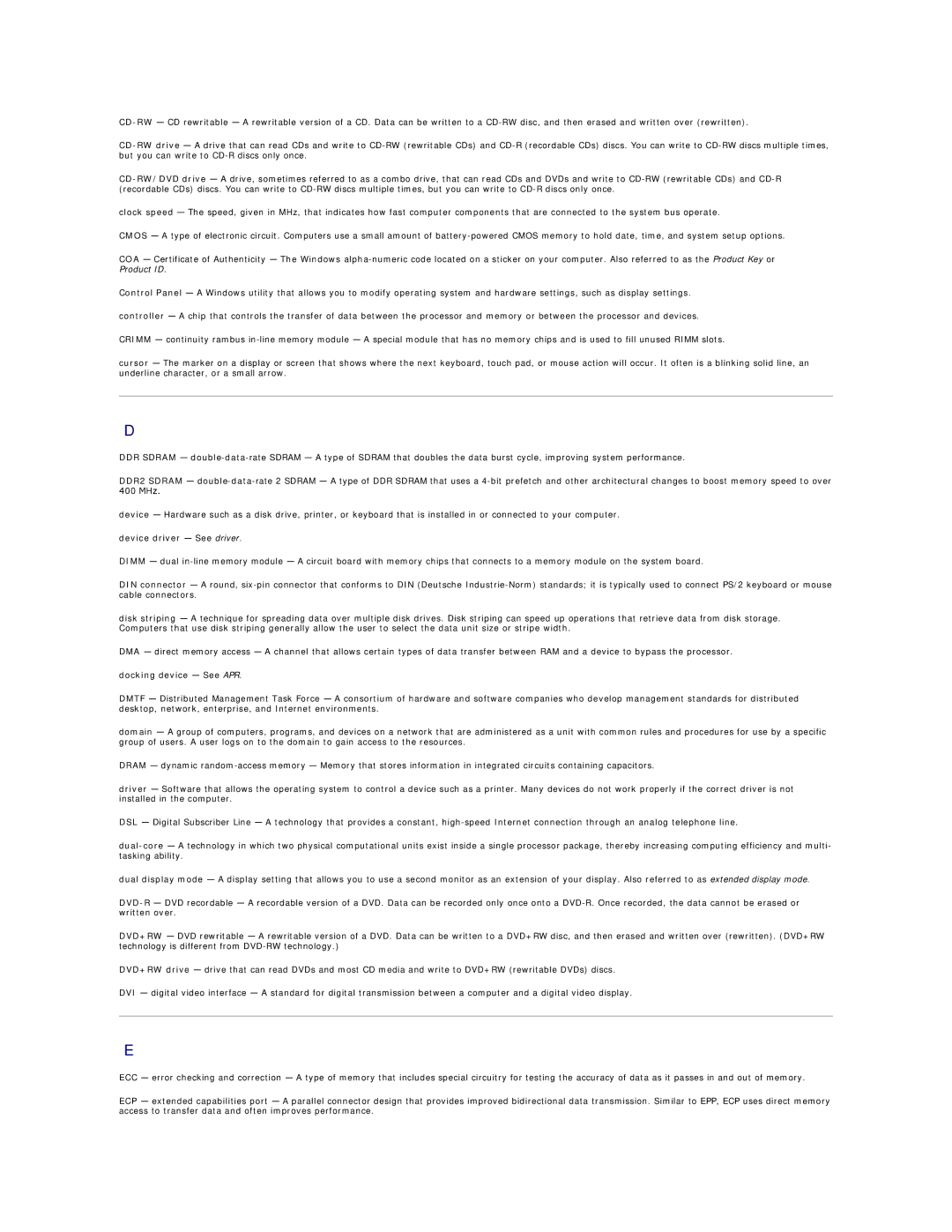
clock speed — The speed, given in MHz, that indicates how fast computer components that are connected to the system bus operate.
CMOS — A type of electronic circuit. Computers use a small amount of
COA — Certificate of Authenticity — The Windows
Control Panel — A Windows utility that allows you to modify operating system and hardware settings, such as display settings.
controller — A chip that controls the transfer of data between the processor and memory or between the processor and devices.
CRIMM — continuity rambus
cursor — The marker on a display or screen that shows where the next keyboard, touch pad, or mouse action will occur. It often is a blinking solid line, an underline character, or a small arrow.
D
DDR SDRAM —
DDR2 SDRAM —
device — Hardware such as a disk drive, printer, or keyboard that is installed in or connected to your computer.
device driver — See driver.
DIMM — dual
DIN connector — A round,
disk striping — A technique for spreading data over multiple disk drives. Disk striping can speed up operations that retrieve data from disk storage. Computers that use disk striping generally allow the user to select the data unit size or stripe width.
DMA — direct memory access — A channel that allows certain types of data transfer between RAM and a device to bypass the processor.
docking device — See APR.
DMTF — Distributed Management Task Force — A consortium of hardware and software companies who develop management standards for distributed desktop, network, enterprise, and Internet environments.
domain — A group of computers, programs, and devices on a network that are administered as a unit with common rules and procedures for use by a specific group of users. A user logs on to the domain to gain access to the resources.
DRAM — dynamic
driver — Software that allows the operating system to control a device such as a printer. Many devices do not work properly if the correct driver is not installed in the computer.
DSL — Digital Subscriber Line — A technology that provides a constant,
dual display mode — A display setting that allows you to use a second monitor as an extension of your display. Also referred to as extended display mode.
DVD+RW — DVD rewritable — A rewritable version of a DVD. Data can be written to a DVD+RW disc, and then erased and written over (rewritten). (DVD+RW technology is different from
DVD+RW drive — drive that can read DVDs and most CD media and write to DVD+RW (rewritable DVDs) discs.
DVI — digital video interface — A standard for digital transmission between a computer and a digital video display.
E
ECC — error checking and correction — A type of memory that includes special circuitry for testing the accuracy of data as it passes in and out of memory.
ECP — extended capabilities port — A parallel connector design that provides improved bidirectional data transmission. Similar to EPP, ECP uses direct memory access to transfer data and often improves performance.
